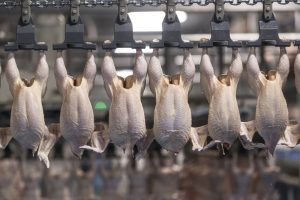Poultry to account for 47% of global meat market by 2031-FAO outlook
December 20, 2022569 views0 comments
By Onome Amuge
Poultry will rank the fastest growing and most consumed meat over the next decade and by 2031, will take 47 per cent of the global meat market, according to the latest agricultural outlook by the Food and Agriculture Organisation (FAO) in conjunction with the Organisation for Economic Cooperation and Development (OECD).
The outlook indicated that long-term shift towards poultry will continue to strengthen, parly as a result of a preference for white meat among high-income countries. This, it explained further, is because poultry is seen as easy to cook, healthier and considered a better choice.
Read Also:
- Global trade at risk as tariff war escalates, WTO cautions
- Analysts see global tariff tensions unsettling Nigerian insurers
- Nigeria’s options amidst Trump’s global tariff onslaught
- Global financial stability at risk from geopolitical tensions, IMF warns
- Bearish sentiment drags market cap down 0.68% to N444bn
Similarly, poultry is regarded as a cheaper alternative to other meats in middle and low-income countries. As a result, the outlook projects that protein availability from poultry will rise by 16 per cent by 2031 and by then will contribute about 47 per cent of the protein consumed from meat sources, followed by pork, lamb and beef.
According to market reports, poultry meat consumption has risen in virtually all countries and regions with consumers attracted by lower prices, product consistency and adaptability, as well as higher protein/lower fat content.
Based on this, consumption of poultry meat is expected to increase globally to 154 million tonnes over the projected period, reflecting the significant role it plays in the national diet of several populous developing nations, including Nigeria.
In lower income nations,both population and income growth are expected to increase overall consumption, but from a much lower per capita base level. However, poultry demand in high-income countries is expected to fall significantly, due to ageing populations and greater dietary concerns that seek more diversity in protein sources.
On the supply and demand side, the outlook said global meat supply will expand to meet rising demand, reaching 377 million tonnes by 2031, but this will be slower than in the last decade.
It also noted that global herd and flock expansion means that China, the world’s largest consumer, is projected to account for most of the increase in meat production, followed by the United States, Brazil and India.
The increase in global meat production is expected to be influenced by growth in the poultry sector, with poultry numbers rising to 31 billion head.
As a consequence, greenhouse gas emissions (GHG) by the meat sector are projected to rise by 9 per cent by 2031.

